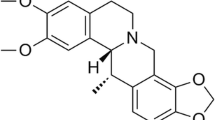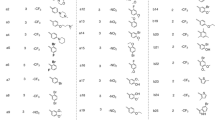Abstract
Interleukin (IL)-35, which has an anti-inflammatory role in acute respiratory distress syndrome (ARDS)/acute lung injury (ALI), is relatively promising as a drug target. Studies have shown that curcumin may play a therapeutic role in ALI and enhance the suppressive function of regulatory T cells (Tregs). To illustrate the effect of curcumin on the regulation of Treg cell differentiation and expression of IL-35, we built a cecal ligation and puncture (CLP)–induced acute lung injury mouse mode with curcumin pretreatment. The expression of IL-35 in serum, severity of lung injury, IL-17A in lung tissue, survival rate, Treg-related cytokines levels in serum, nuclear factor-kappa B (NF-κB)’s nuclear translocation in lung tissue, and splenic CD4+CD25+FOXP3+ Tregs were assessed. Furthermore, the proportion of Tregs, STAT5, and IL-35 expression during naïve CD4+ T cell differentiation in vitro was measured. Compared with the CLP group, the increased IL-35 expression in CLP with the curcumin pretreatment (CLP + Cur) group was consistent with the decreased severity of lung injury, IL-17A protein levels in lung tissue, and Treg-related cytokines levels. Pretreatment with curcumin, the survival rate climbed to 50%, while the mortality rate was 100% in the CLP group. In addition, splenic CD4+CD25+FOXP3+ Treg cells increased in the CLP + Cur group. In vitro, CD4+CD25+FOXP3+ Treg cells from naïve CD4+ T cells, STAT5 proportion, and IL-35 expression increased after curcumin treatment. These findings showed that curcumin might regulate IL-35 by activating the differentiation of Treg cells to control the inflammation in acute lung injury.





Similar content being viewed by others
References
Bellani, G., J.G. Laffey, T. Pham, E. Fan, L. Brochard, A. Esteban, L. Gattinoni, F. van Haren, A. Larsson, D. McAuley, M. Ranieri, G. Rubenfeld, B.T. Thompson, H. Wrigge, A.S. Slutsky, A. Pesenti, LUNG SAFE Investigators, and ESICM Trials Group. 2016. Epidemiology, patterns of care, and mortality for patients with acute respiratory distress syndrome in intensive care units in 50 countries. Jama 315: 788–800.
Restrepo, M.I., J.D. Chalmers, Y. Song, C. Mallow, J. Hewlett, F. Maldonado, et al. 2017. Year in review 2016: respiratory infections, acute respiratory distress syndrome, pleural diseases, lung cancer and interventional pulmonology. Respirology (Carlton, Vic) 22: 602–611.
Blondonnet, R., J.M. Constantin, V. Sapin, and M. Jabaudon. 2016. A pathophysiologic approach to biomarkers in acute respiratory distress syndrome. Disease Markers 2016: 3501373.
Collison, L.W., C.J. Workman, T.T. Kuo, K. Boyd, Y. Wang, K.M. Vignali, R. Cross, D. Sehy, R.S. Blumberg, and D.A.A. Vignali. 2007. The inhibitory cytokine IL-35 contributes to regulatory T-cell function. Nature 450: 566–569.
Wang, C.J., M. Zhang, H. Wu, S.H. Lin, and F. Xu. 2019. IL-35 interferes with splenic T cells in a clinical and experimental model of acute respiratory distress syndrome. International Immunopharmacology 67: 386–395.
Cao, J., F. Xu, S. Lin, X. Tao, Y. Xiang, X. Lai, et al. 2015. IL-35 is elevated in clinical and experimental sepsis and mediates inflammation. Clinical immunology (Orlando, Fla) 161: 89–95.
Lelli, D., A. Sahebkar, T.P. Johnston, and C. Pedone. 2017. Curcumin use in pulmonary diseases: state of the art and future perspectives. Pharmacological Research 115: 133–148.
Xu, F., S.H. Lin, Y.Z. Yang, R. Guo, J. Cao, and Q. Liu. 2013. The effect of curcumin on sepsis-induced acute lung injury in a rat model through the inhibition of the TGF-beta1/SMAD3 pathway. International Immunopharmacology 16: 1–6.
Chen, L., Y. Lu, L. Zhao, L. Hu, Q. Qiu, Z. Zhang, M. Li, G. Hong, B. Wu, G. Zhao, and Z. Lu. 2018. Curcumin attenuates sepsis-induced acute organ dysfunction by preventing inflammation and enhancing the suppressive function of Tregs. International Immunopharmacology 61: 1–7.
Gouda, M.M., and Y.P. Bhandary. 2019. Acute lung injury: IL-17A-mediated inflammatory pathway and its regulation by curcumin. Inflammation 42: 1160–1169.
Omenetti, S., and T.T. Pizarro. 2015. The Treg/Th17 axis: a dynamic balance regulated by the gut microbiome. Frontiers in Immunology 6: 639.
Gao, S., W. Zhang, Q. Zhao, J. Zhou, Y. Wu, Y. Liu, Z. Yuan, and L. Wang. 2019. Curcumin ameliorates atherosclerosis in apolipoprotein E deficient asthmatic mice by regulating the balance of Th2/Treg cells. Phytomedicine : international journal of phytotherapy and phytopharmacology 52: 129–135.
Flaherty S, Reynolds JM. Mouse naive CD4+ T cell isolation and in vitro differentiation into T cell subsets. Journal of visualized experiments : JoVE 2015.
Kim EJ, Lee JG, Kim JY, Song SH, Joo DJ, Huh, KH, et al. Enhanced immune-modulatory effects of thalidomide and dexamethasone co-treatment on T cell subsets. 2017; 152:628–637.
Ashbaugh, D.G., D.B. Bigelow, T.L. Petty, and B.E. Levine. 1967. Acute respiratory distress in adults. Lancet (London, England) 2: 319–323.
Ranieri, V.M., G.D. Rubenfeld, B.T. Thompson, N.D. Ferguson, E. Caldwell, E. Fan, et al. 2012. Acute respiratory distress syndrome: the Berlin definition. Jama 307: 2526–2533.
Calfee, C.S., K. Delucchi, P.E. Parsons, B.T. Thompson, L.B. Ware, and M.A. Matthay. 2014. Subphenotypes in acute respiratory distress syndrome: latent class analysis of data from two randomised controlled trials. The Lancet Respiratory Medicine 2: 611–620.
Su, L.C., X.Y. Liu, A.F. Huang, and W.D. Xu. 2018. Emerging role of IL-35 in inflammatory autoimmune diseases. Autoimmunity Reviews 17: 665–673.
Teymouri M, Pirro M. IL-35, a hallmark of immune-regulation in cancer progression, chronic infections and inflammatory diseases. 2018; 143:2105–2115.
Liyanage UK, Moore TT, Joo HG, Tanaka Y, Herrmann V, Doherty G, et al. Prevalence of regulatory T cells is increased in peripheral blood and tumor microenvironment of patients with pancreas or breast adenocarcinoma. Journal of immunology (Baltimore, Md : 1950) 2002; 169:2756–61.
Xue, W., D. Yan, and Q. Kan. 2019. Interleukin-35 as an emerging player in tumor microenvironment. Journal of Cancer 10: 2074–2082.
Lin, S., H. Wu, C. Wang, Z. Xiao, and F. Xu. 2018. Regulatory T cells and acute lung injury: cytokines, uncontrolled inflammation, and therapeutic implications. Frontiers in Immunology 9: 1545.
D’Alessio, F.R., J.T. Kurzhagen, and H. Rabb. 2019. Reparative T lymphocytes in organ injury. The Journal of Clinical Investigation 129: 2608–2618.
Kim, J., S.W. Jeong, H. Quan, C.W. Jeong, J.I. Choi, and H.B. Bae. 2016. Effect of curcumin (Curcuma longa extract) on LPS-induced acute lung injury is mediated by the activation of AMPK. Journal of Anesthesia 30: 100–108.
Sakurai, R., P. Villarreal, S. Husain, J. Liu, T. Sakurai, E. Tou, J.S. Torday, and V.K. Rehan. 2013. Curcumin protects the developing lung against long-term hyperoxic injury. American Journal of Physiology Lung Cellular and Molecular Physiology 305: L301–L311.
Liu, K., H.L. Chen, H. Huang, H. Jing, G.H. Dong, H.W. Wu, and Q.S. You. 2012. Curcumin attenuates cardiopulmonary bypass-induced lung oxidative damage in rats. Journal of Cardiovascular Pharmacology and Therapeutics 17: 395–402.
Tyagi, N., D.K. Singh, D. Dash, and R. Singh. 2019. Curcumin modulates paraquat-induced epithelial to mesenchymal transition by regulating transforming growth factor-beta (TGF-beta) in A549 cells. Inflammation 42: 1441–1455.
Kochetkova, I., S. Golden, K. Holderness, G. Callis, and D.W. Pascual. 2010. IL-35 stimulation of CD39+ regulatory T cells confers protection against collagen II-induced arthritis via the production of IL-10. Journal of immunology (Baltimore, Md : 1950) 184: 7144–7153.
Niedbala, W., X.Q. Wei, B. Cai, A.J. Hueber, B.P. Leung, I.B. McInnes, et al. 2007. IL-35 is a novel cytokine with therapeutic effects against collagen-induced arthritis through the expansion of regulatory T cells and suppression of Th17 cells. European Journal of Immunology 37: 3021–3029.
Acknowledgments
We are very grateful to the laboratory of Lipid & Glucose Metabolism at the First Affiliated Hospital of Chongqing Medical University to provide laboratory facilities.
Funding
This study was supported by the National Natural Science Foundation of China (81873928 to FX, 81760341 to YZ-Y, 81801894 to SH-L), Basic Science and Cutting-Edge Technology Research Projects of Chongqing Science and Technology Commission (cstc2019jcyjA0502, to SH-L), and Chinese Medicine Science and Technology Project of Chongqing City Health and Family Planning Committee (ZY201702071 to FX, 2019ZY3434 to SH-L).
Author information
Authors and Affiliations
Contributions
Conception hypothesis and design: Fang Xu and Yuan-zheng Yang. Data acquisition and analysis: Yan-qing Chen, Yu-sen Chai, and Ke Xie. Manuscript preparation: Yan-qing Chen and Fang Xu. Searched and collected bibliography: Shi-hui Lin and Chuan-jiang Wang.
Corresponding authors
Ethics declarations
Conflict of Interest
The authors declare that they have no conflict of interest.
Ethics Approval
This study was approved by the Ethics Committees of the First Affiliated Hospital of Chongqing Medical University (2016–34).
Additional information
Publisher’s Note
Springer Nature remains neutral with regard to jurisdictional claims in published maps and institutional affiliations.
Rights and permissions
About this article
Cite this article
Chen, Yq., Chai, Ys., Xie, K. et al. Curcumin Promotes the Expression of IL-35 by Regulating Regulatory T Cell Differentiation and Restrains Uncontrolled Inflammation and Lung Injury in Mice. Inflammation 43, 1913–1924 (2020). https://doi.org/10.1007/s10753-020-01265-2
Published:
Issue Date:
DOI: https://doi.org/10.1007/s10753-020-01265-2




